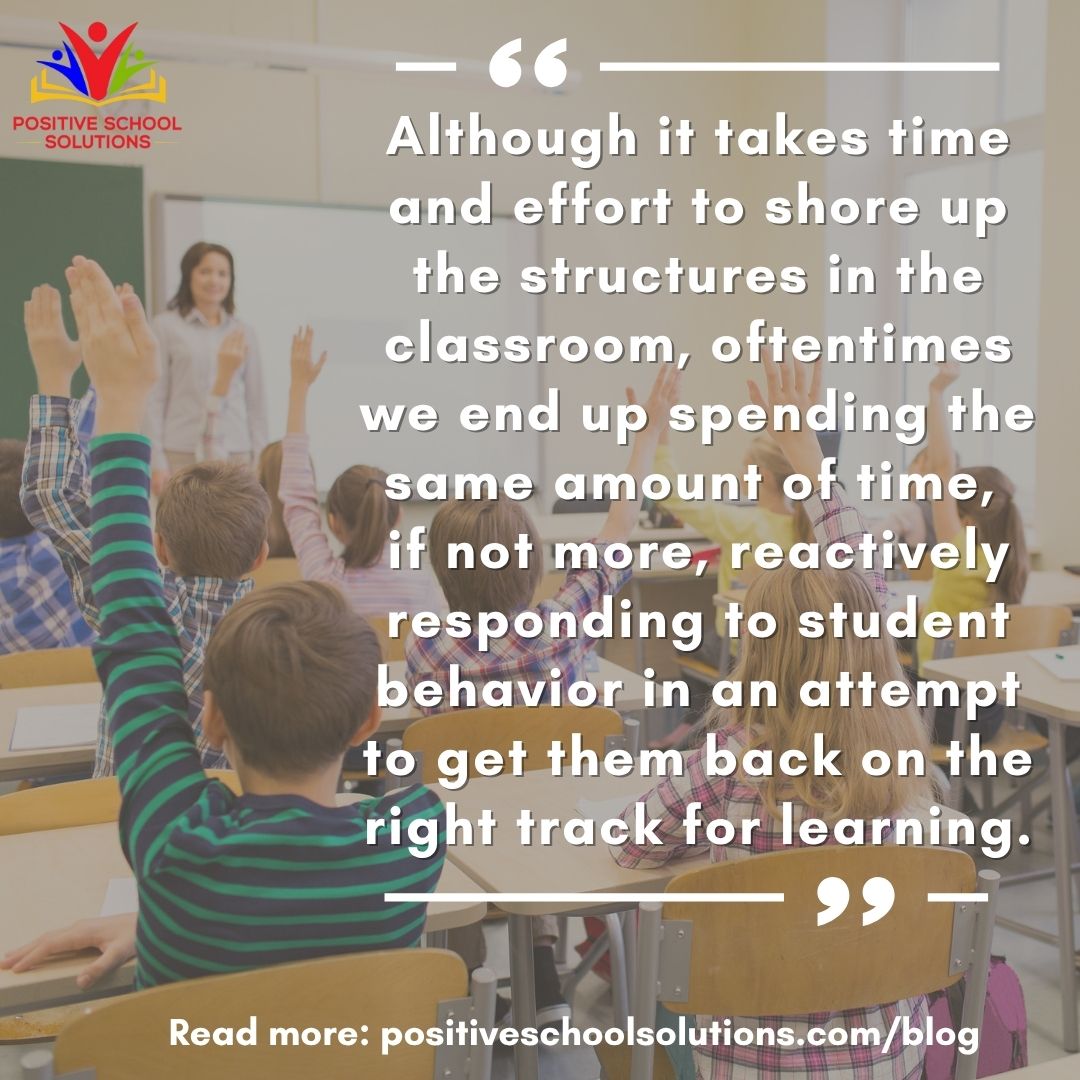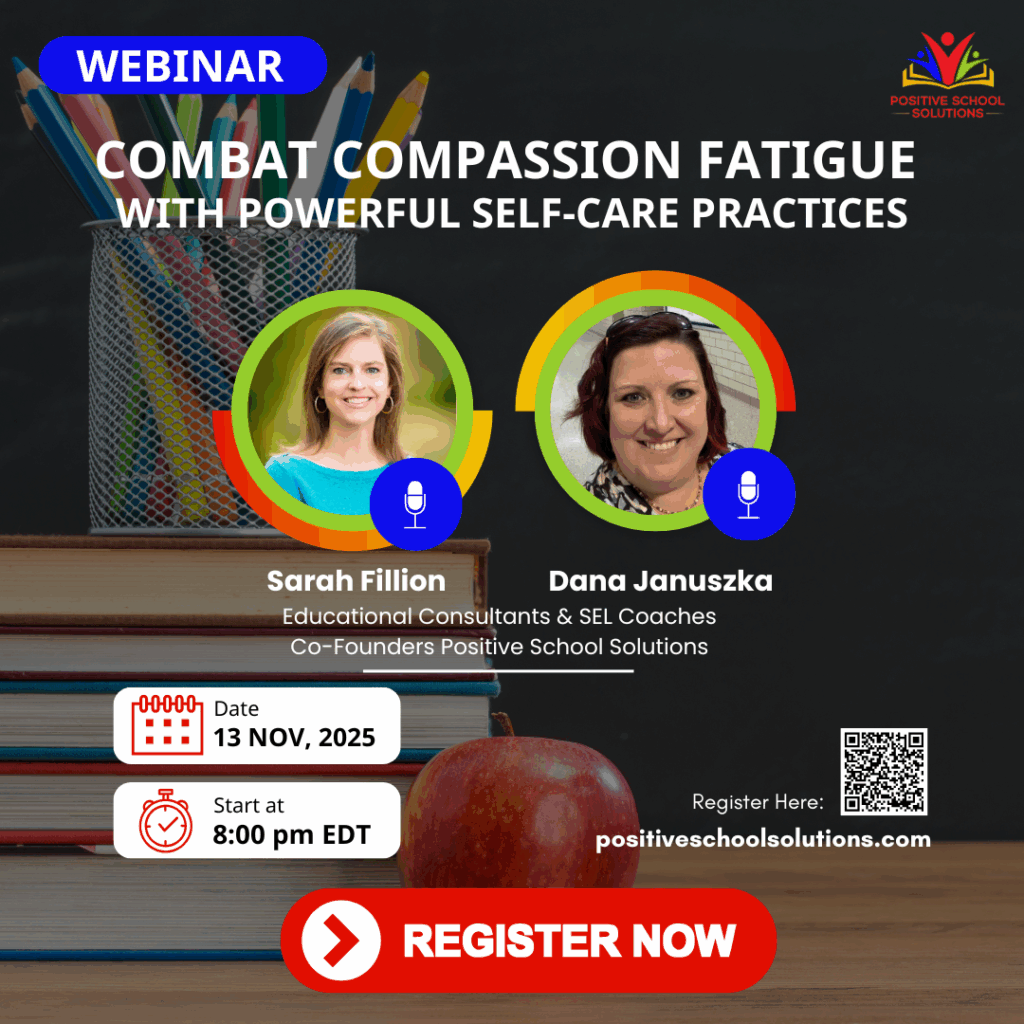 Around this time each school year, I notice a similar pattern. First, students are really familiar with one another. They know which buttons to push, or avoid, to set one another off and swing from being happy – to being incredibly upset with each other – in the space of a breath. Similarly, students know how the classroom operates. They know the routines, which procedures are important to do with one-hundred percent accuracy, and shortcuts they could take throughout the day. I also notice that at this time of year, educators feel simultaneously like they have things under control and that they have nothing under control. Recognizing what students need to learn and the progress required by the end of the year. Once the 100th day of school is achieved, it often feels like the days are quickly ticking by and summer break is going to be here before all that progress can be made. Having this clear vision – the gap between where the students are and where they need to be in a short period of time – can encourage us to take our own shortcuts, ending with varying results.
Around this time each school year, I notice a similar pattern. First, students are really familiar with one another. They know which buttons to push, or avoid, to set one another off and swing from being happy – to being incredibly upset with each other – in the space of a breath. Similarly, students know how the classroom operates. They know the routines, which procedures are important to do with one-hundred percent accuracy, and shortcuts they could take throughout the day. I also notice that at this time of year, educators feel simultaneously like they have things under control and that they have nothing under control. Recognizing what students need to learn and the progress required by the end of the year. Once the 100th day of school is achieved, it often feels like the days are quickly ticking by and summer break is going to be here before all that progress can be made. Having this clear vision – the gap between where the students are and where they need to be in a short period of time – can encourage us to take our own shortcuts, ending with varying results.
I remember one lesson in particular, where I had come up with an activity that was engaging and offered students choice, while focusing on several key topics they needed to understand more in depth. The shortcut I took was assuming that I would somehow find time in my packed day to gather the materials and set up my room – or that elves would do it for me. I spent time thinking and planning the lesson, but I didn’t fully prepare for it. Being unprepared led to complete chaos in the classroom – as I tried to gather materials while simultaneously explaining directions, student behaviors deteriorated at a pace faster than I could recover. After about five minutes, I realized that while my intentions were great, without the structure I provided students back in October, this lesson was going to fail in a number of ways.
As I was setting everything up after school for the next day (not willing to let go of my lesson idea) I realized that structure was the critical piece to ensuring that students made the amount of progress required by the end of the year. Reflecting as I gathered materials, I recognized the many ways I had let structure slip over the past few months. I made a lot more assumptions about what my students could do (after all, they had been in my room for more than 6 months, so they must know the procedures for all new materials that were introduced!) In giving the students independence and increasing the level of challenge, I had inadvertently set them up for failure by taking away structures and making assumptions. That afternoon, I looked over the structures I had in place at the start of the school year and identified how I would reinstate them so the momentum of learning would continue throughout the remainder of our time together. I knew that providing structure was the only way we were going to cover all the material AND maintain the positive learning community we had worked so hard to establish.
Here are some of the aspects of structure to consider revisiting this time of year to ensure your community is focused on learning:
Assign partnerships – At this point in the year, students might act more like siblings than classmates or colleagues, and they may naturally gravitate toward or away from specific individuals. To encourage a positive learning community where collaboration is required and encouraged, consider taking the responsibility for assigning the partnerships and groups for different learning activities. Provide students opportunities to work with a variety of partners and intentionally group students together to meet your learning objectives.
Keep the rules alive – When we spend a lot of time at the start of the year creating rules, it is essential we keep them alive by revisiting them regularly. Students have matured and the level of responsibility they may be able to handle has increased, so the rules (when they cover broader goals such as respect) will look different when they are followed now versus the start of the year. Asking students to think about a particular rule and how it might be shown in the next activity provides students with a visual of what the expectations are and how to achieve them.
Provide students with examples – Sharing with students examples of quality work, effort, and behavior can support their ability to achieve success. When students see an example through us modeling a behavior or several different examples of an end-product, they are able to envision their own abilities in meeting these expectations. Through conversation and sharing several different examples, we can increase student creativity rather than limiting students’ ideas through thinking they must replicate the example exactly as seen.
Consistently hold students accountable – One critical element to creating a sense of safety is holding students accountable for their effort in both learning and behavior. As the school year progresses, we may let some behaviors slide, knowing students will get themselves back on track. The message we may inadvertently send to students could be ‘some days I will expect this, other days I will not.’ That inconsistency decreases a sense of safety in the classroom. When students know that you will always intervene if their behavior is not supporting learning, or that you will always set high expectations for them as individuals and as a class, students are more likely to push themselves to learn more and continue growing.
Practice important routines and procedures – Taking time to practice the essential routines and procedures can save a lot of time. Transitions from one learning space to another, taking out or putting away materials, and moving from one activity to another are all routines that take time. In order to lead active and interactive lessons, as well as maximize the amount of time on task, students need to complete these routines with ease. Taking time to practice these routines and ensuring that all students are successfully doing them efficiently allows us to go deeper in the learning.
After my day of reflection, I committed time throughout the next few days to revisit, reinstate, and practice the critical structures that create an optimal learning environment. The results were impressive – over the course of a week, I noticed student behavior towards one another was more respectful and learning-focused, students spent more time on the learning activities, and the learning space had a sense of calm productivity that had been missing for a few weeks.
Through observing and coaching educators from Kindergarten to eighth grade, we see similar patterns for both students and teachers this time of year. Although it takes time and effort to shore up the structures in the classroom, oftentimes we end up spending the same amount of time, if not more, reactively responding to student behavior in an attempt to get them back on the right track for learning. When we shift our attention to proactively setting students up for success, we feel calmer and are able to see the students experience greater success.
Written by Sarah Fillion & Dana Januszka 2022

